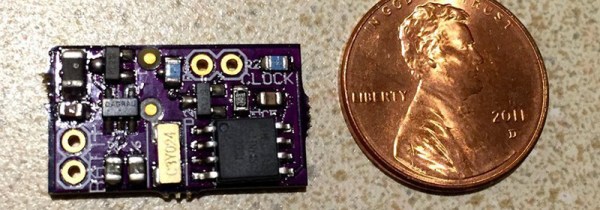There is a strange clock in the waiting room of Lord Vetinari, Patrician of Ankh-Morpork. While this clock keeps accurate time overall, the ticks and tocks are out of sync, occasionally missing a tick altogether. The net effect is one of turning one’s brain into a sort of porridge.
Yes, a Vetinari Clock has made its way into The Hackaday Prize. This isn’t a clock that’s random yet accurate over long time spans; this is a complete replacement for run-of-the-mill clock movements you can find at any craft store.
In addition to the Vetinari Clock, [Nick Sayer]’s Crazy Clock can be programmed as a sidereal clock (3m 56s fast per day), a Martian clock (39m 36s slow per day), and a tidal clock (50m 28s slow per day), as well as some ‘novelty’ modes that still have 86400 ticks per day ranging from subtle to ‘clown car’ levels of craziness.
[Nick] is gunning for the ‘best product’ category for the Hackaday Prize, and for that he’s designing a board to be a direct replacement for the board in a Quartex Q80 clock movement. With this new board, [Nick] can replace the electronics in this movement in just a few minutes. Being built around an ATtiny45 means it’s infinitely hackable. A clock with this movement would be a great product, although judging from the video below, not one we would want to be around all day.
Continue reading “Hackaday Prize Entry: A Clock For Alternate Timebases”

















